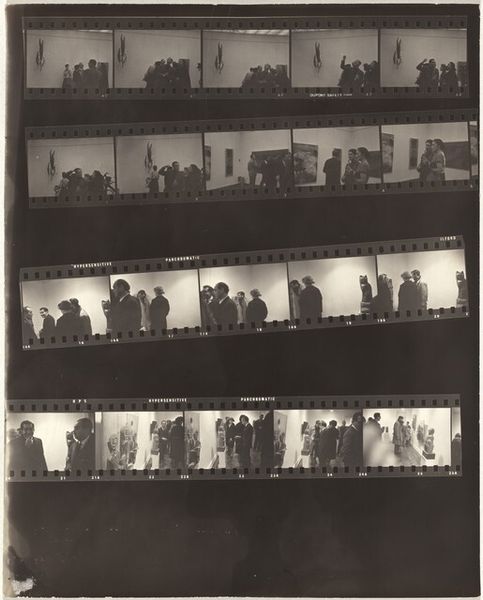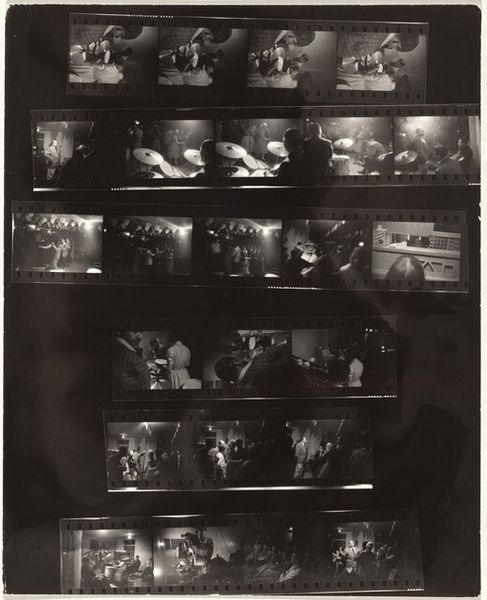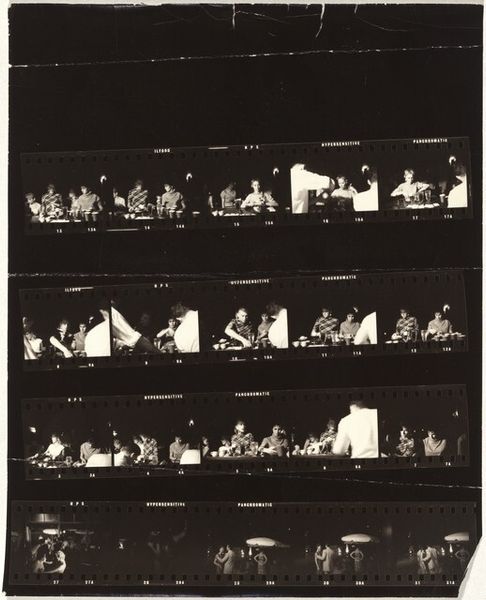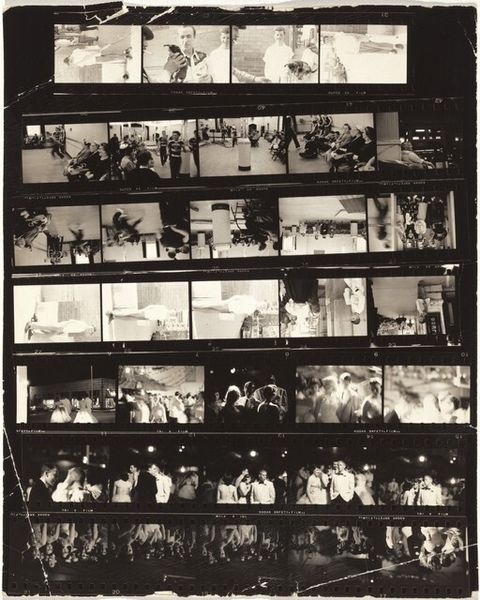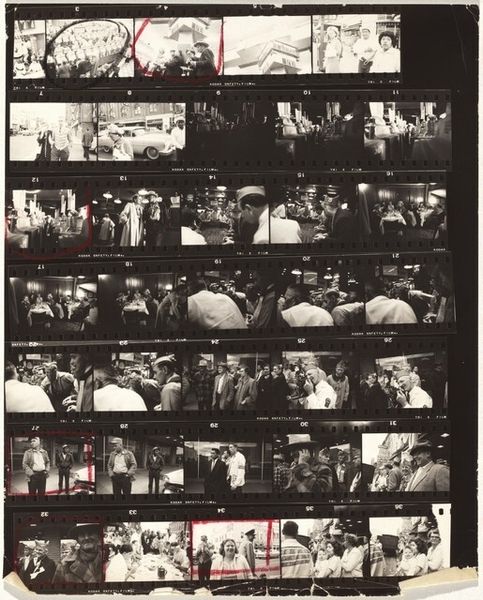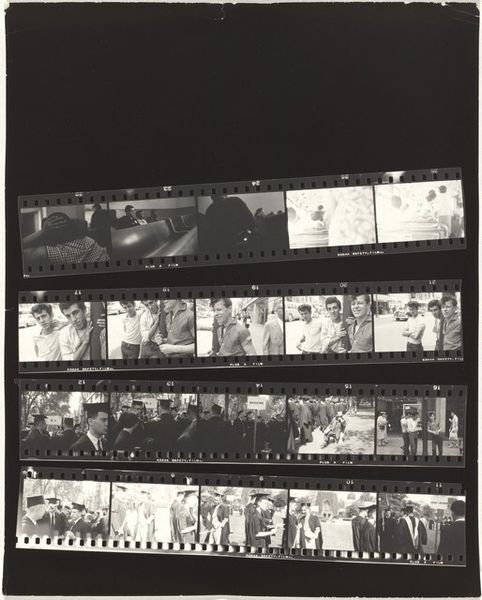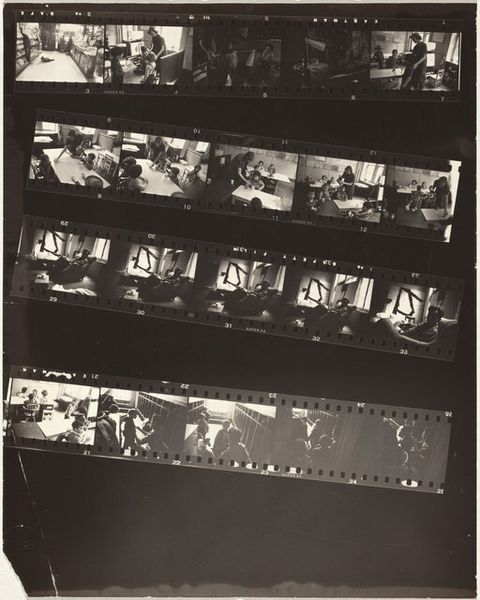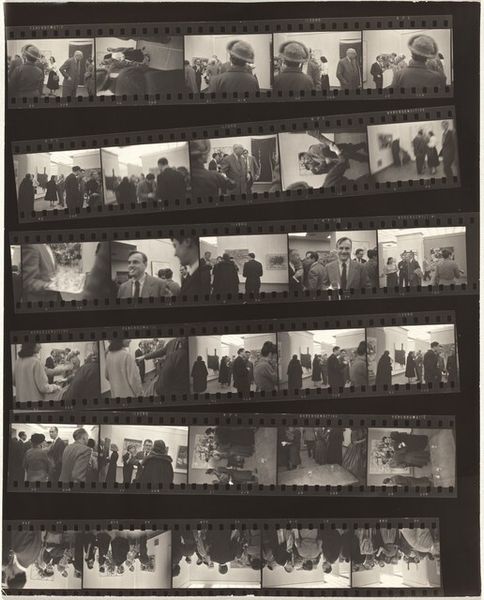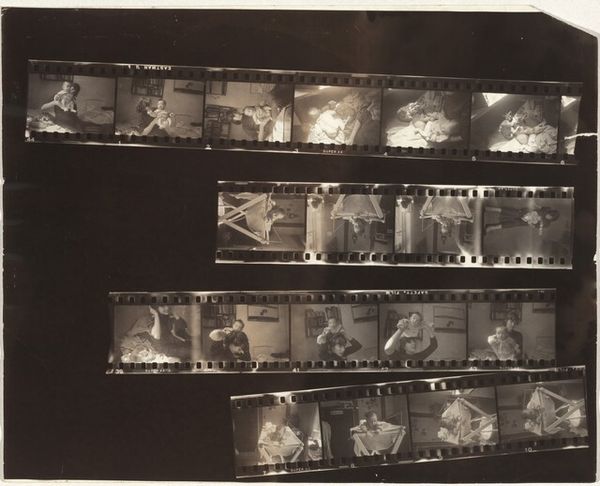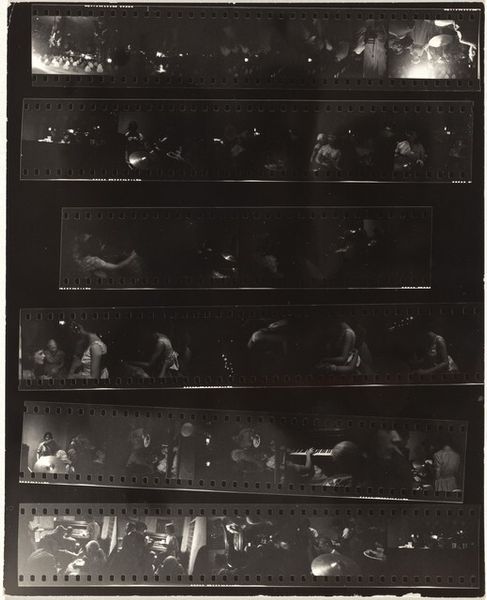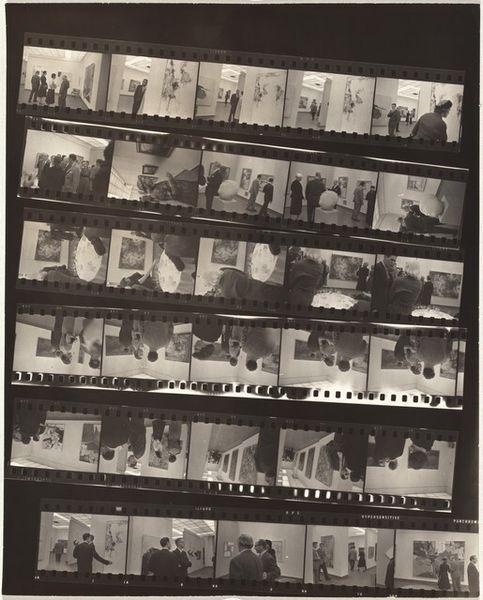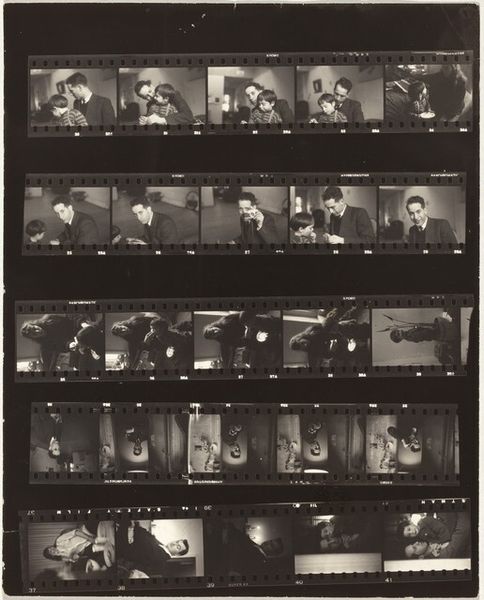
photography, gelatin-silver-print
#
portrait
#
black and white photography
#
black and white format
#
archive photography
#
street-photography
#
photography
#
historical photography
#
photojournalism
#
black and white
#
gelatin-silver-print
#
monochrome photography
#
monochrome
Dimensions: sheet: 50.5 × 40.8 cm (19 7/8 × 16 1/16 in.) image: 47.3 × 33.7 cm (18 5/8 × 13 1/4 in.)
Copyright: National Gallery of Art: CC0 1.0
Curator: Looking at this photograph, what strikes you? It’s a gelatin silver print by Gordon Parks, titled "Newsman Being Frisked at Muslim Rally in Chicago," taken sometime after 1963. Editor: The tension, immediately. The stark contrast, the press of bodies, it all speaks to a charged atmosphere, doesn't it? There’s such an interesting play of power being communicated. Curator: Power, certainly. The imagery of frisking has long been associated with control, ritual cleansing even. I find the framing particularly symbolic—the faceless figures surrounding the central figures. Editor: Right, that anonymity reinforces the idea of institutional power acting upon the individual. The newsman is identifiable, vulnerable, while his interrogators are part of an amorphous, less defined body. Parks captures that imbalance so well. Given the historical context, the rise of the Nation of Islam, the Civil Rights Movement… Curator: Yes, the image becomes even more loaded. Parks, throughout his career, returned to exploring moments when identity, belief and authority intersected, and frequently clashed. Editor: Absolutely, and as a Black photographer during that era, his perspective is critical. I wonder, looking at the crispness of the image, about his decisions regarding depth of field—how sharp the focus is on the interaction versus the obscured background. There's a clear visual hierarchy at play. Curator: I see it too. And while we see "Muslim Rally" in the work's title, what exactly are the historical events that Parks’ image is related to, what collective meanings are formed here? The work prompts important questions, challenging us to examine the interplay of social activism and media scrutiny during this period, especially regarding race and religious identity. Editor: It does. This piece feels as relevant now as it did then, which speaks volumes about how certain power dynamics stubbornly persist. I'm struck by how effectively this single image encapsulates broader socio-political narratives about race, religion, and freedom of the press. Curator: It's a photograph that serves as a mirror, reflecting both the past and the ongoing struggle for justice and understanding. A visual reminder that the act of witnessing can be both powerful and perilous.
Comments
No comments
Be the first to comment and join the conversation on the ultimate creative platform.
